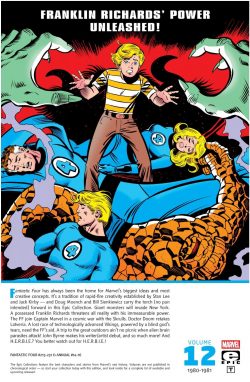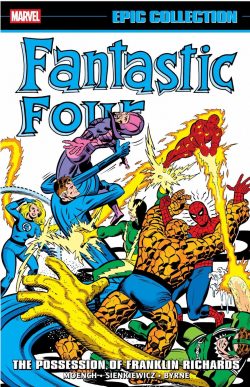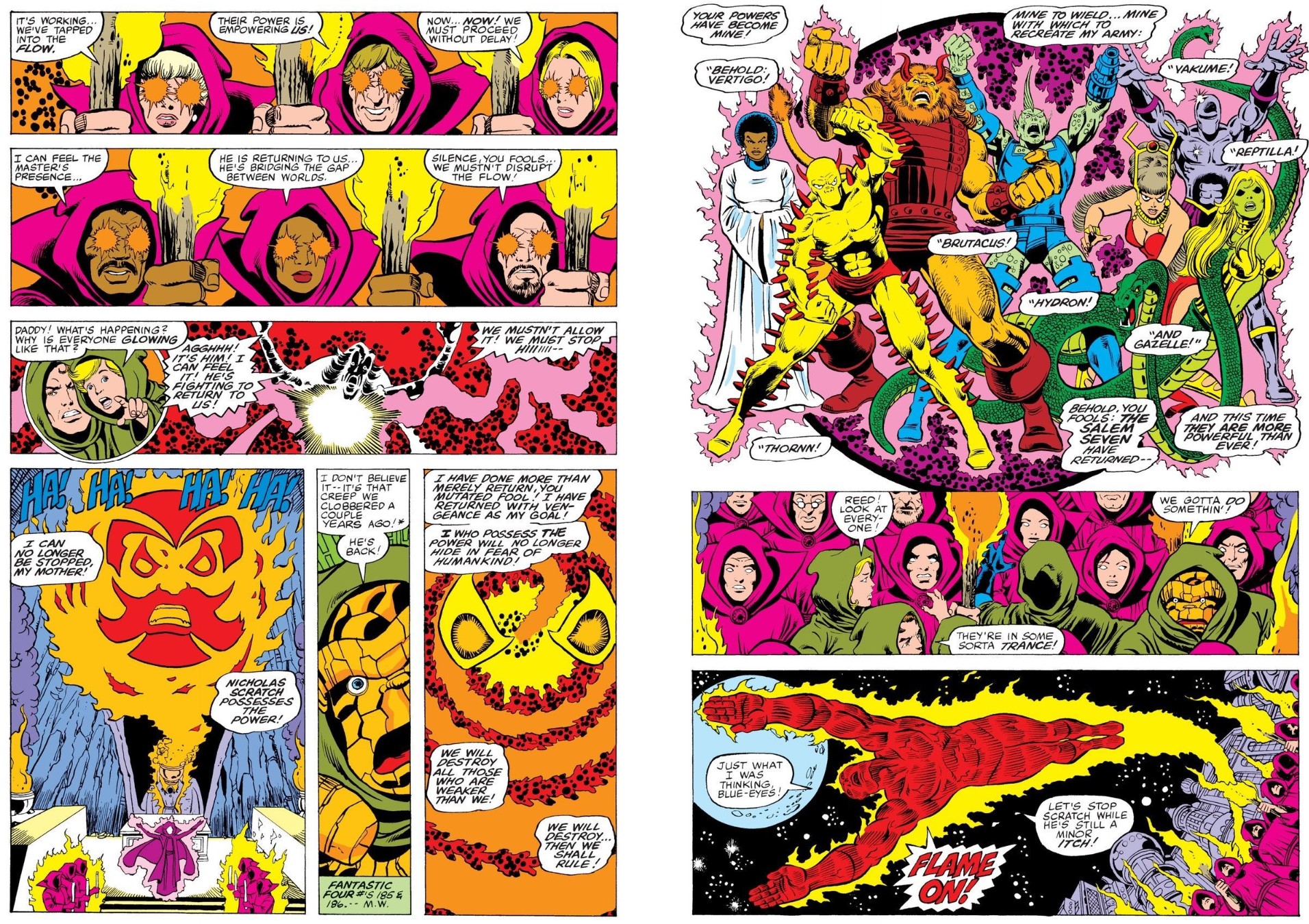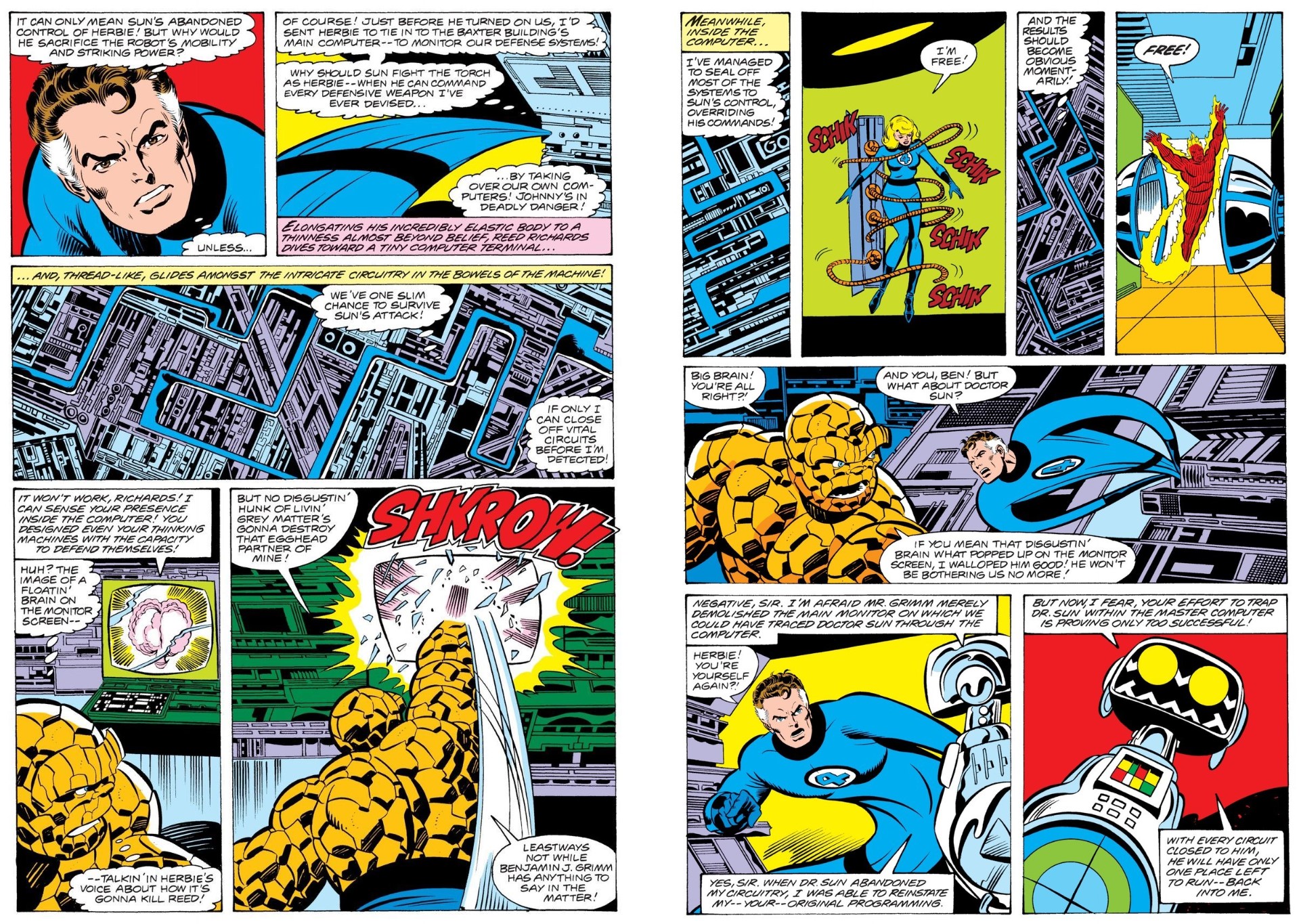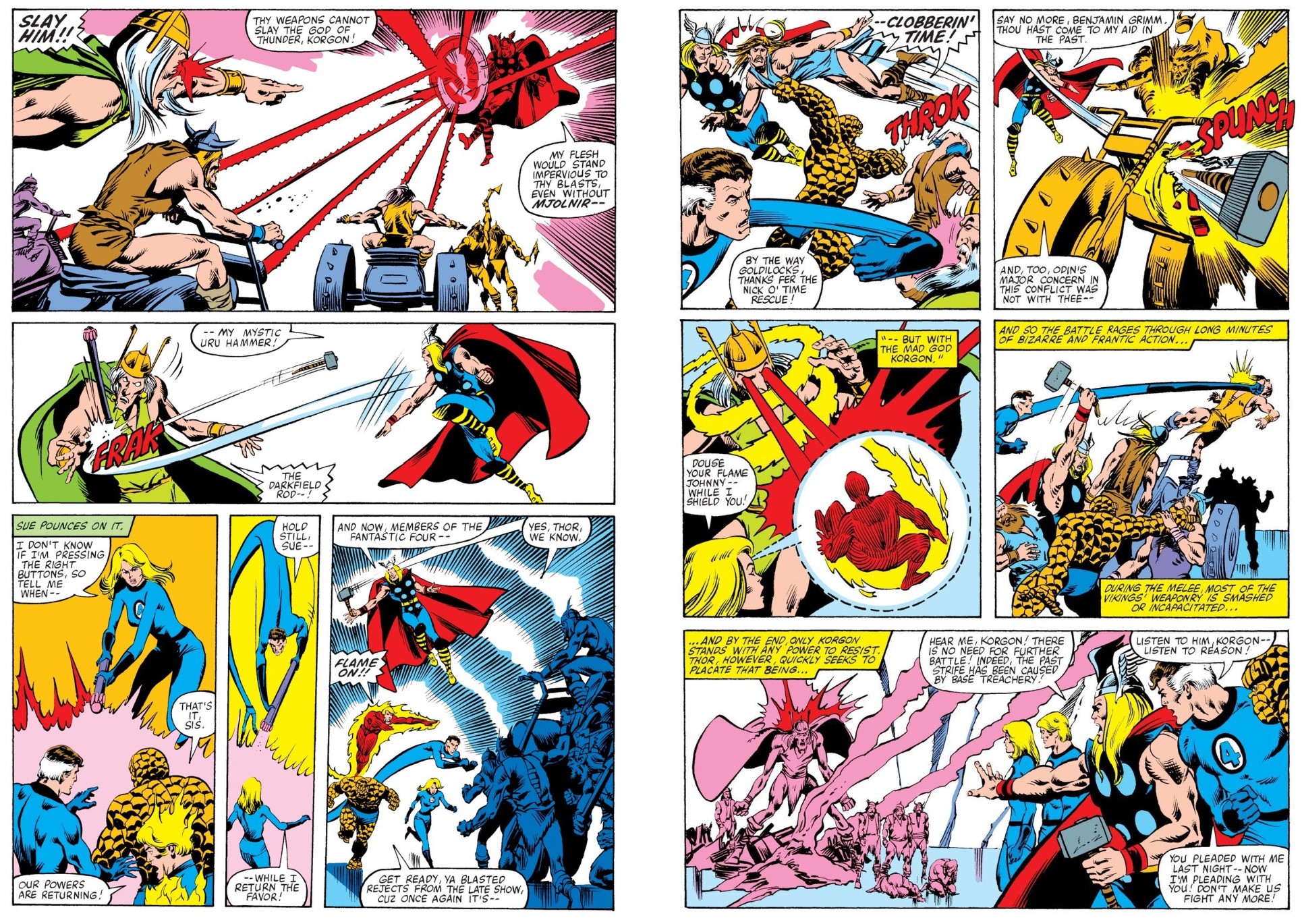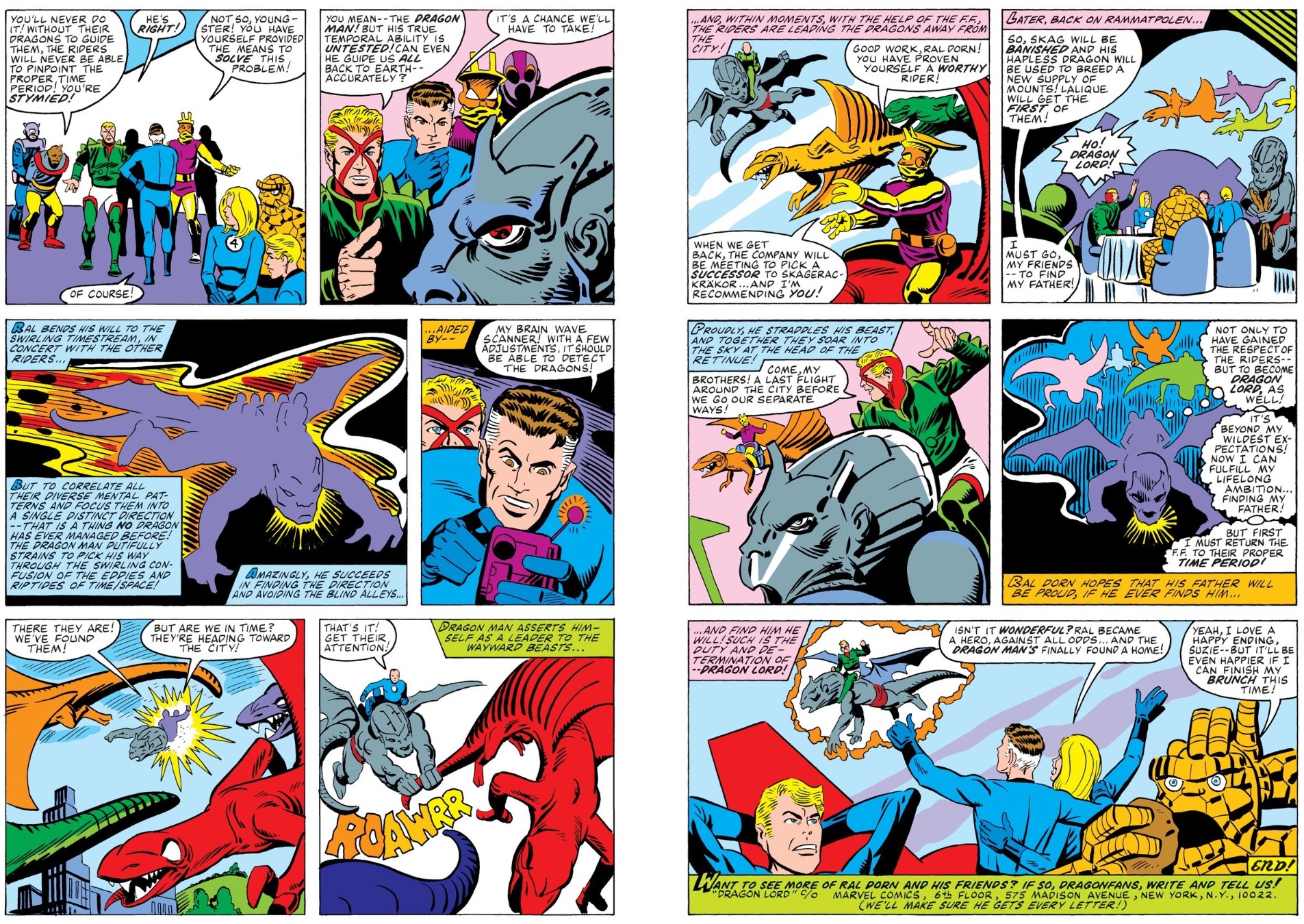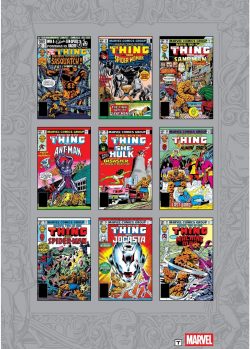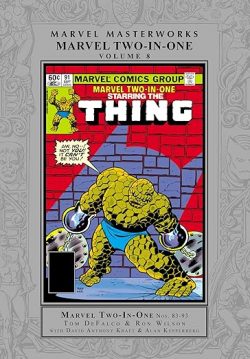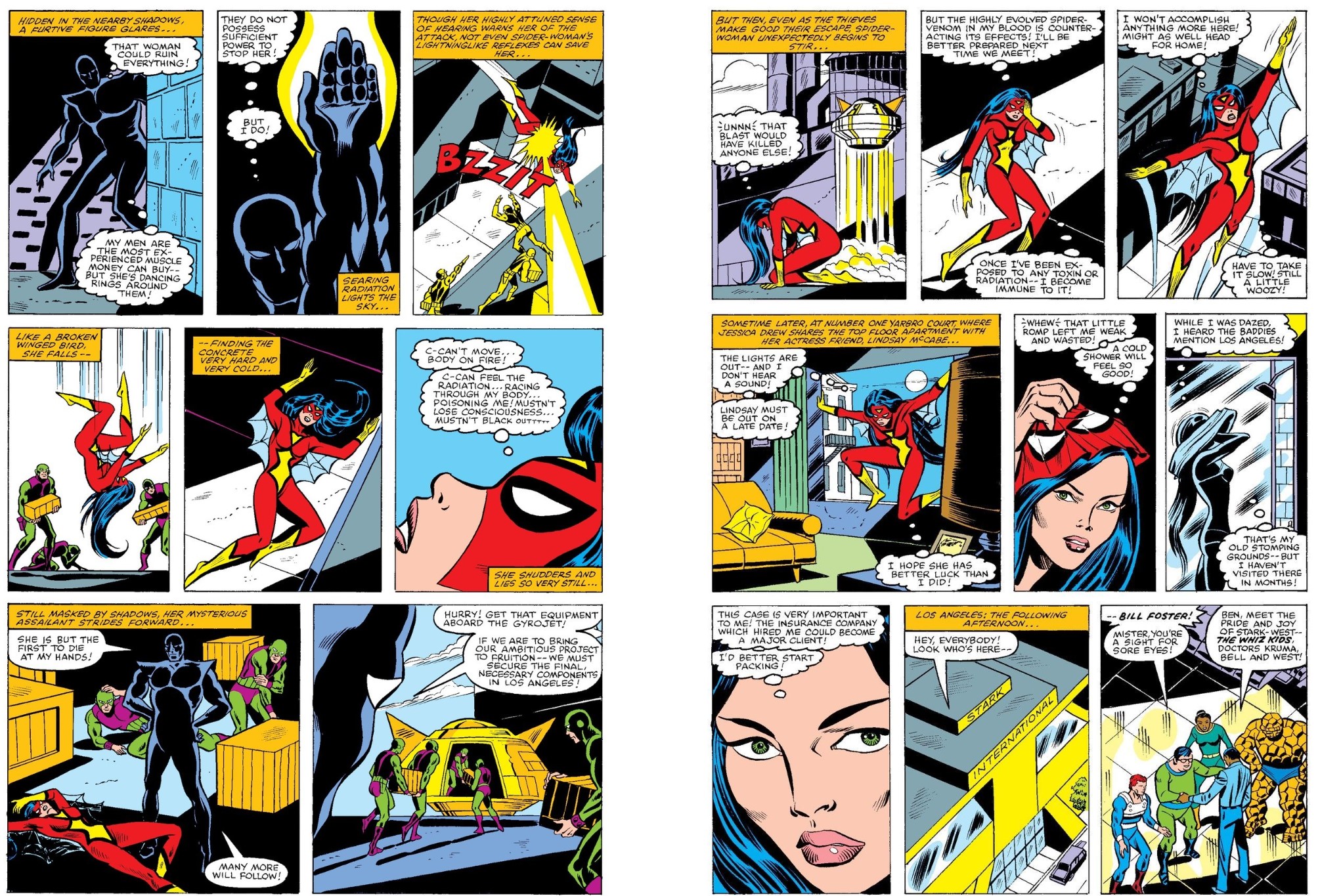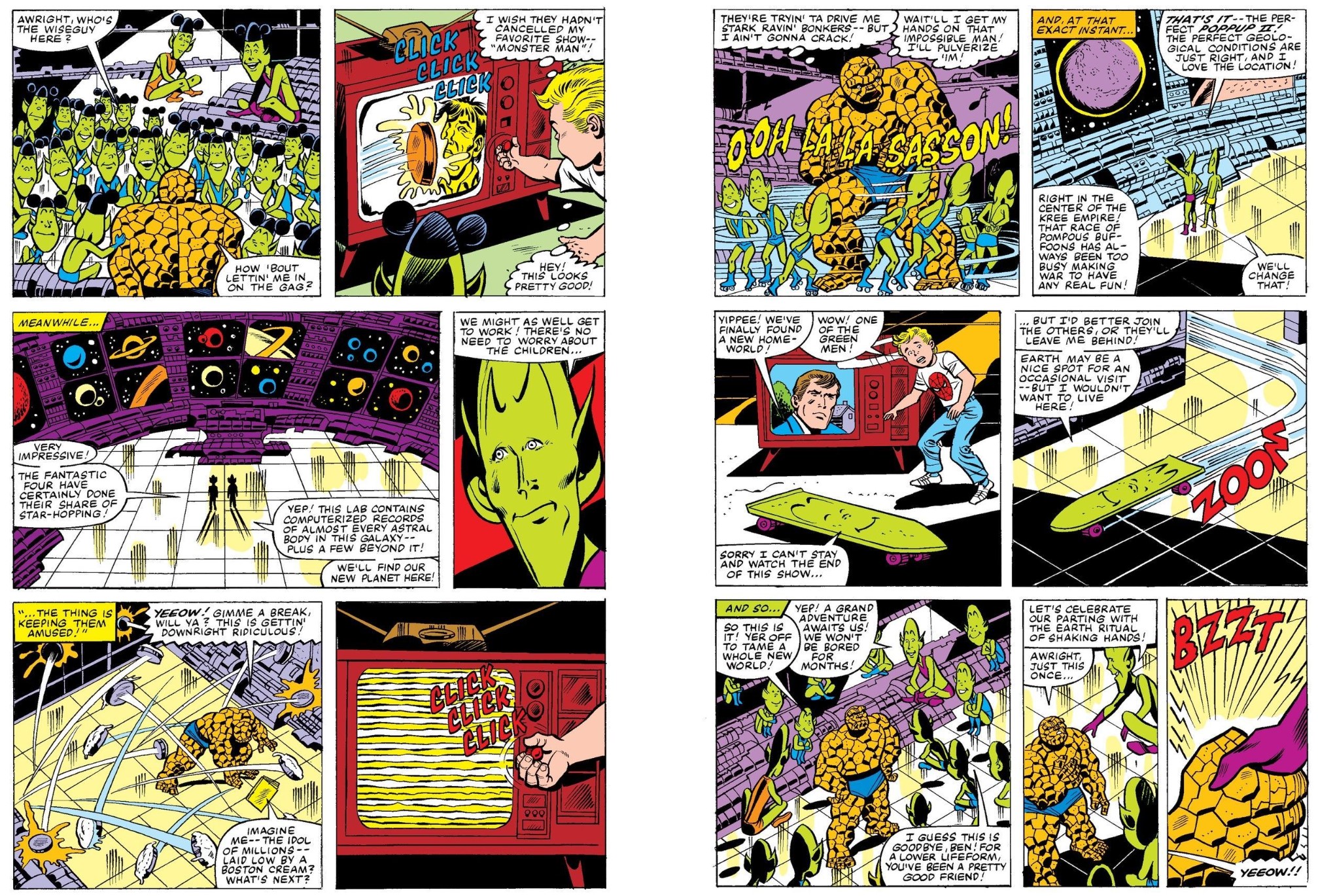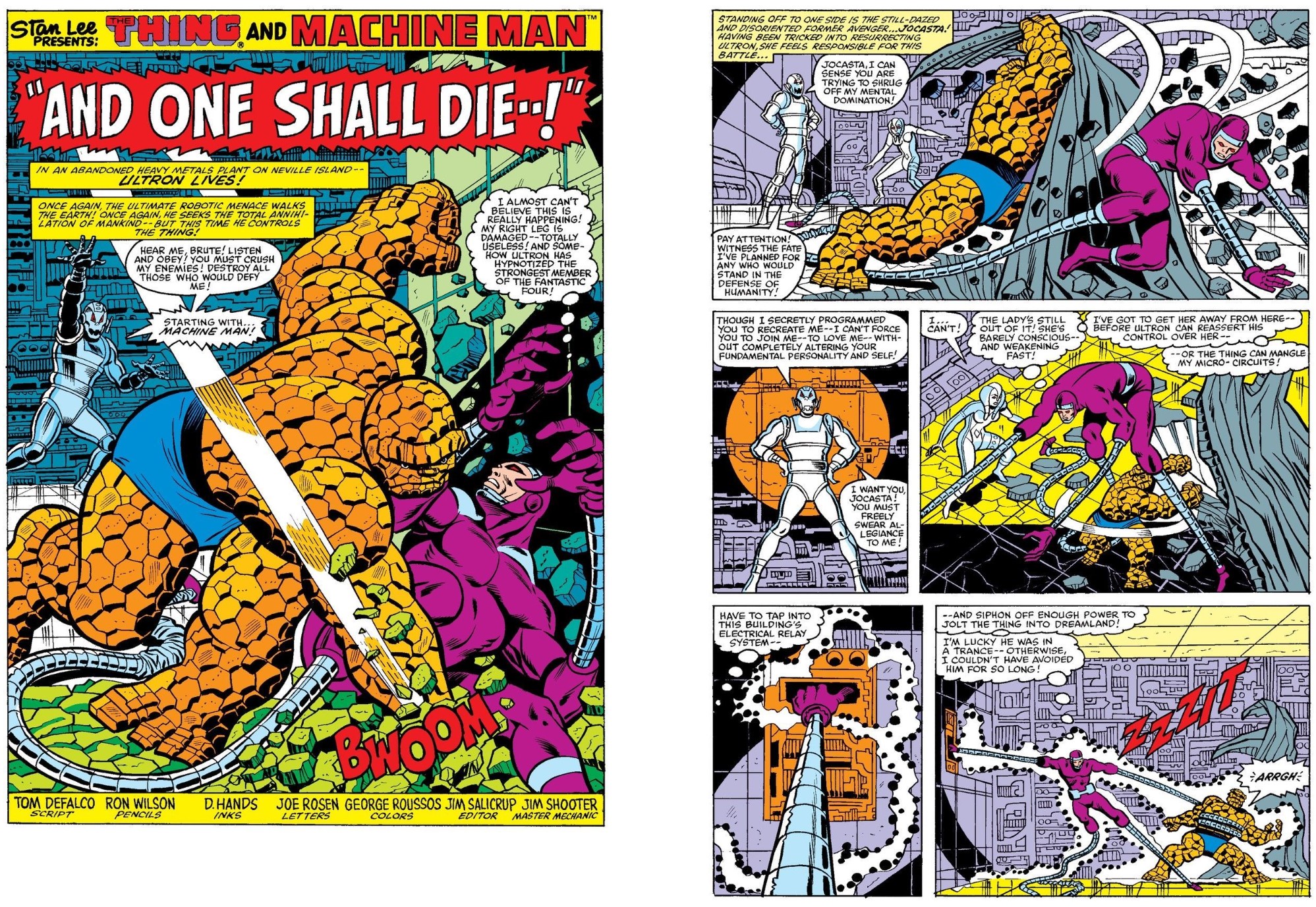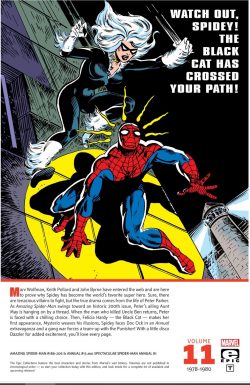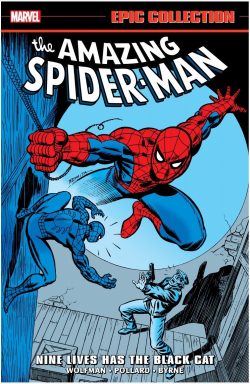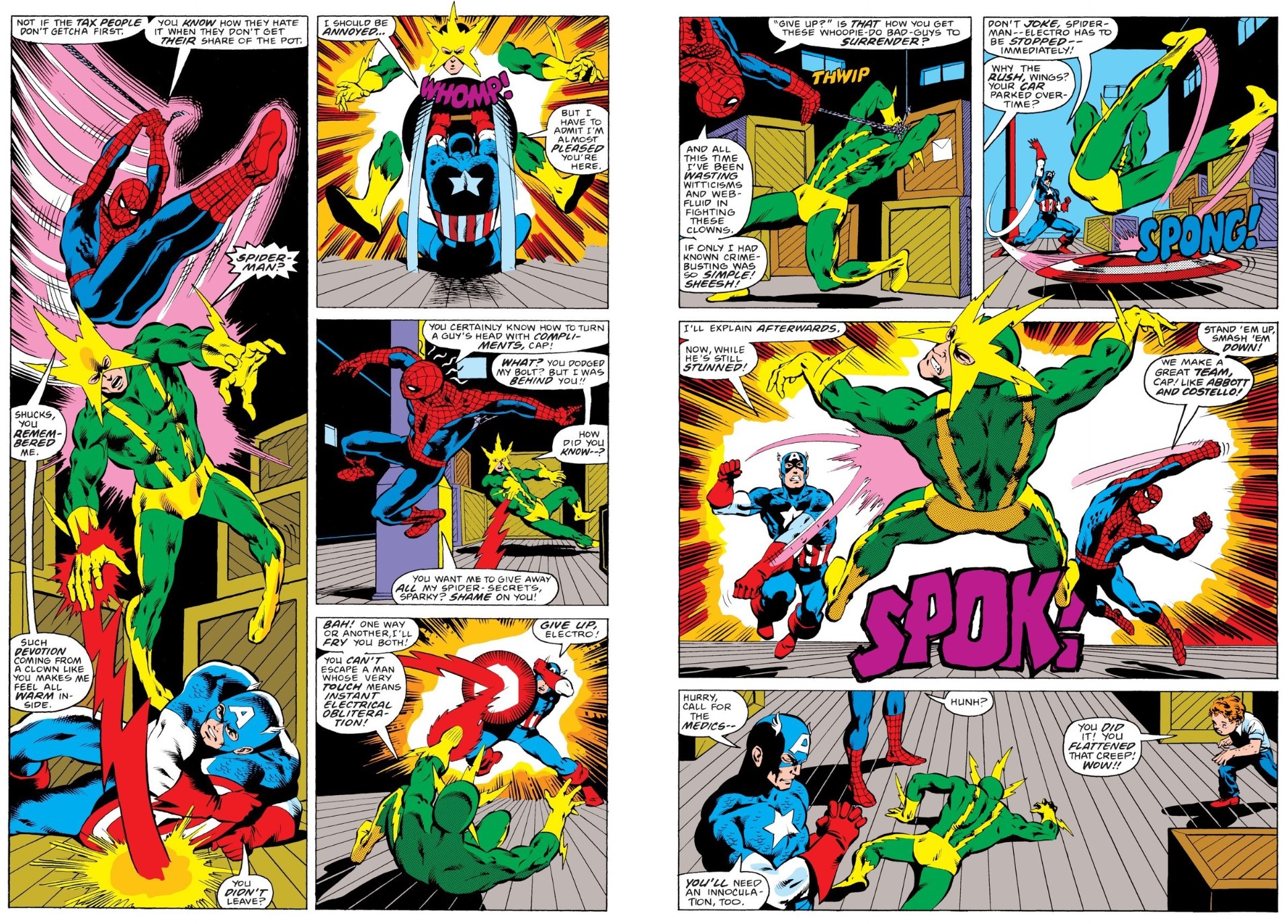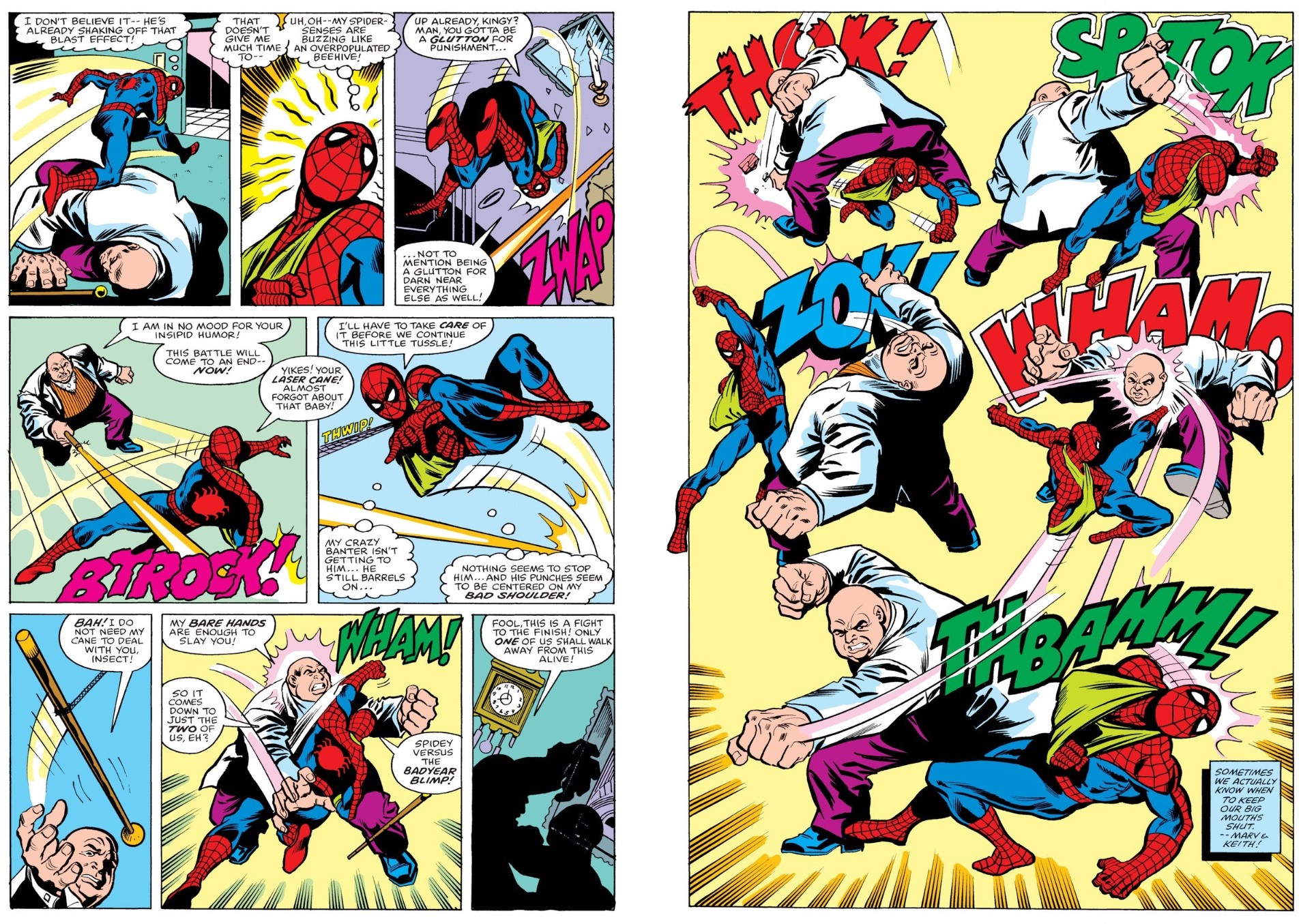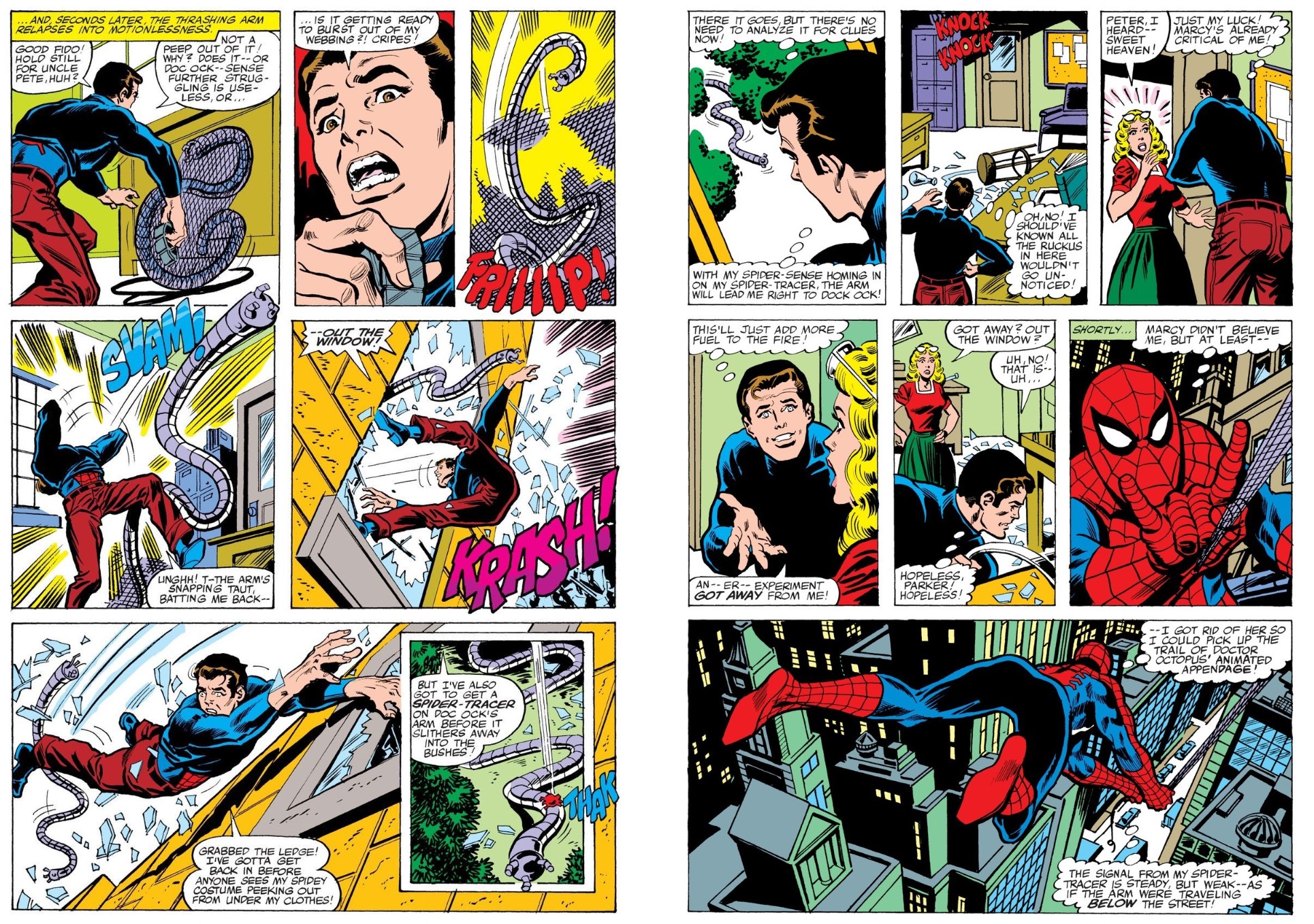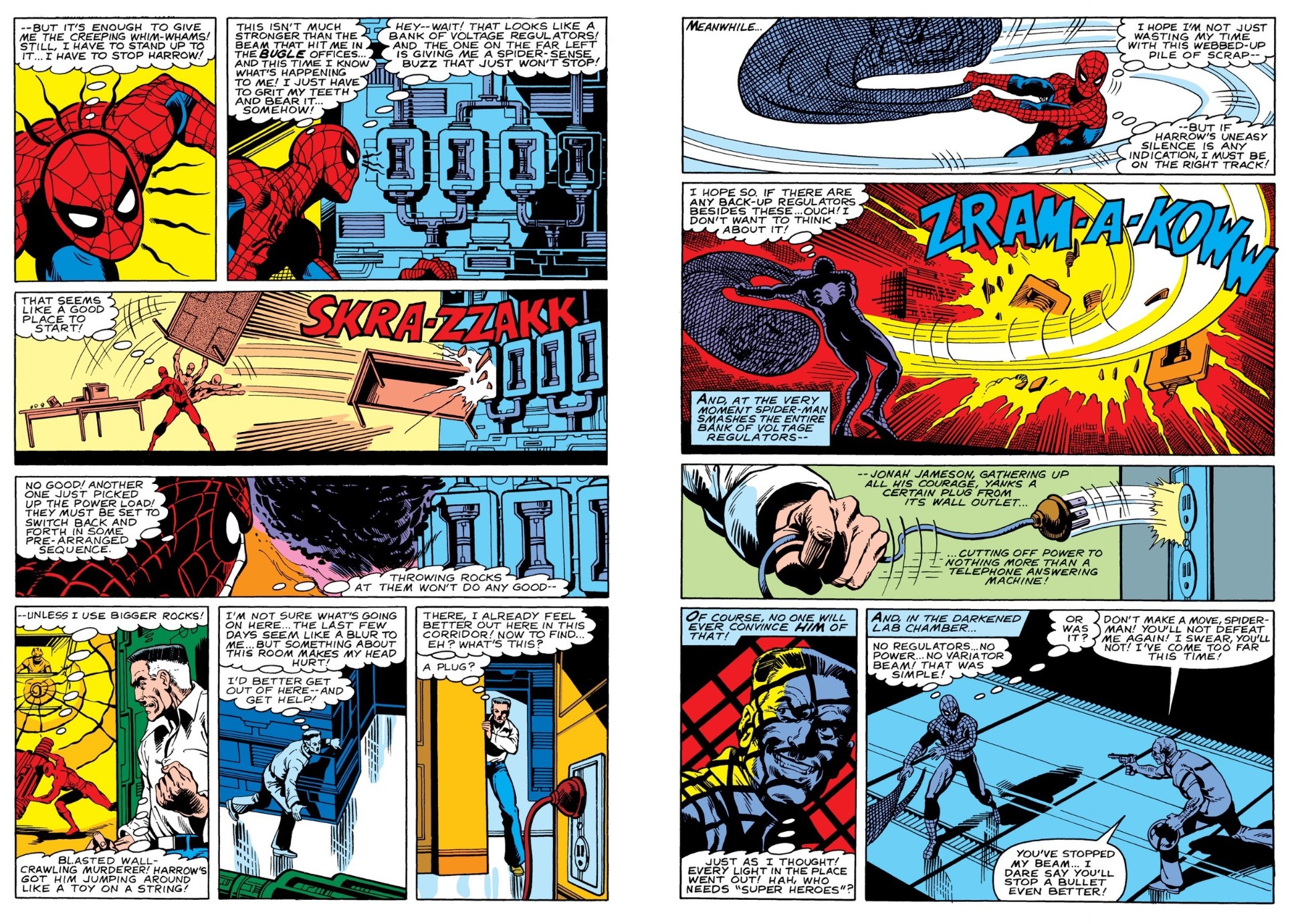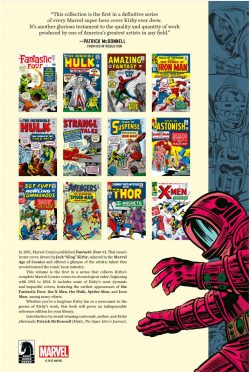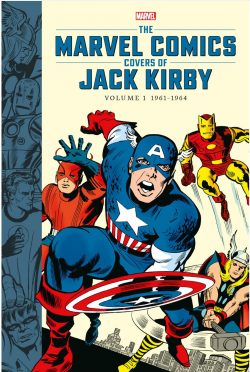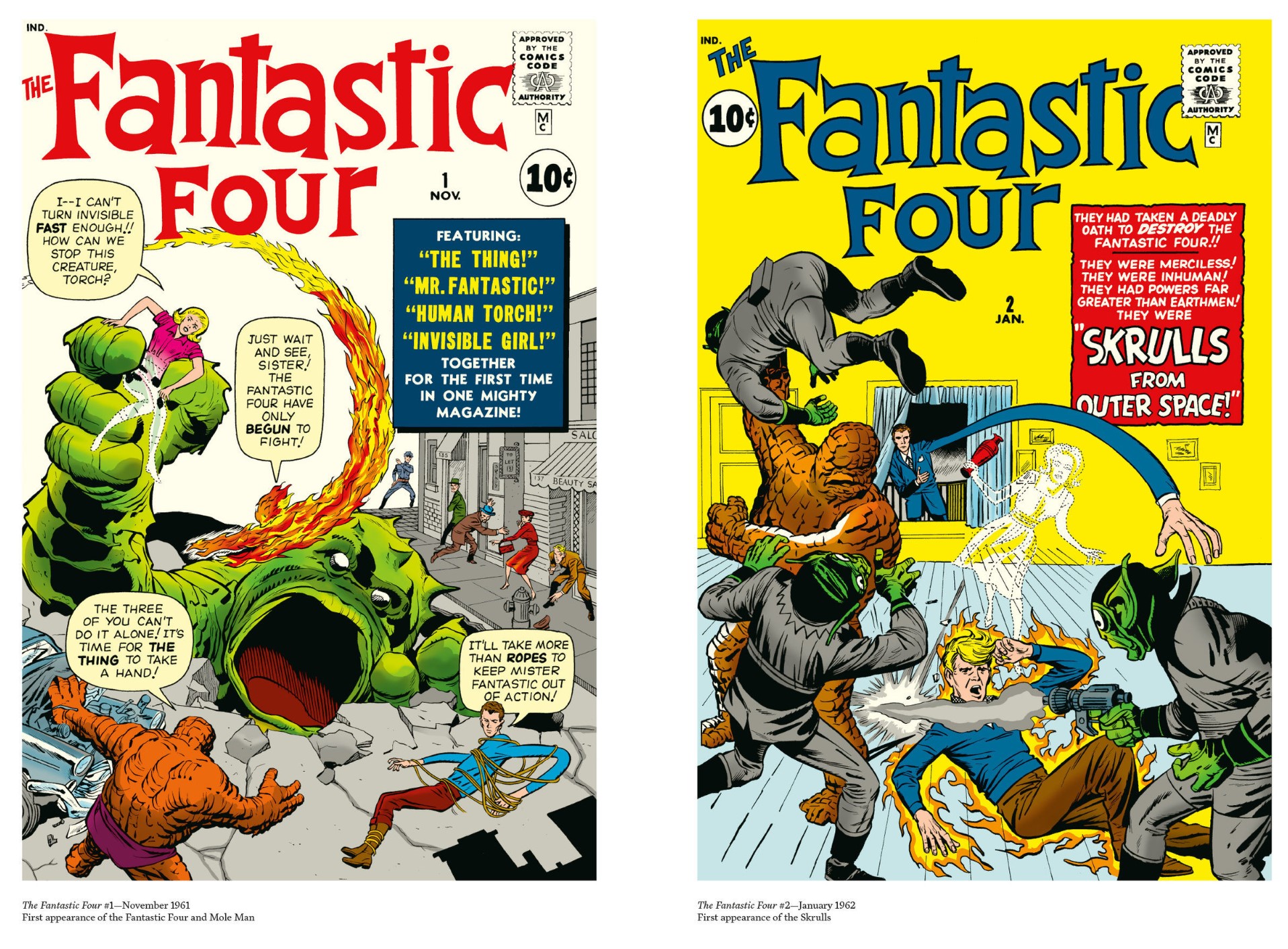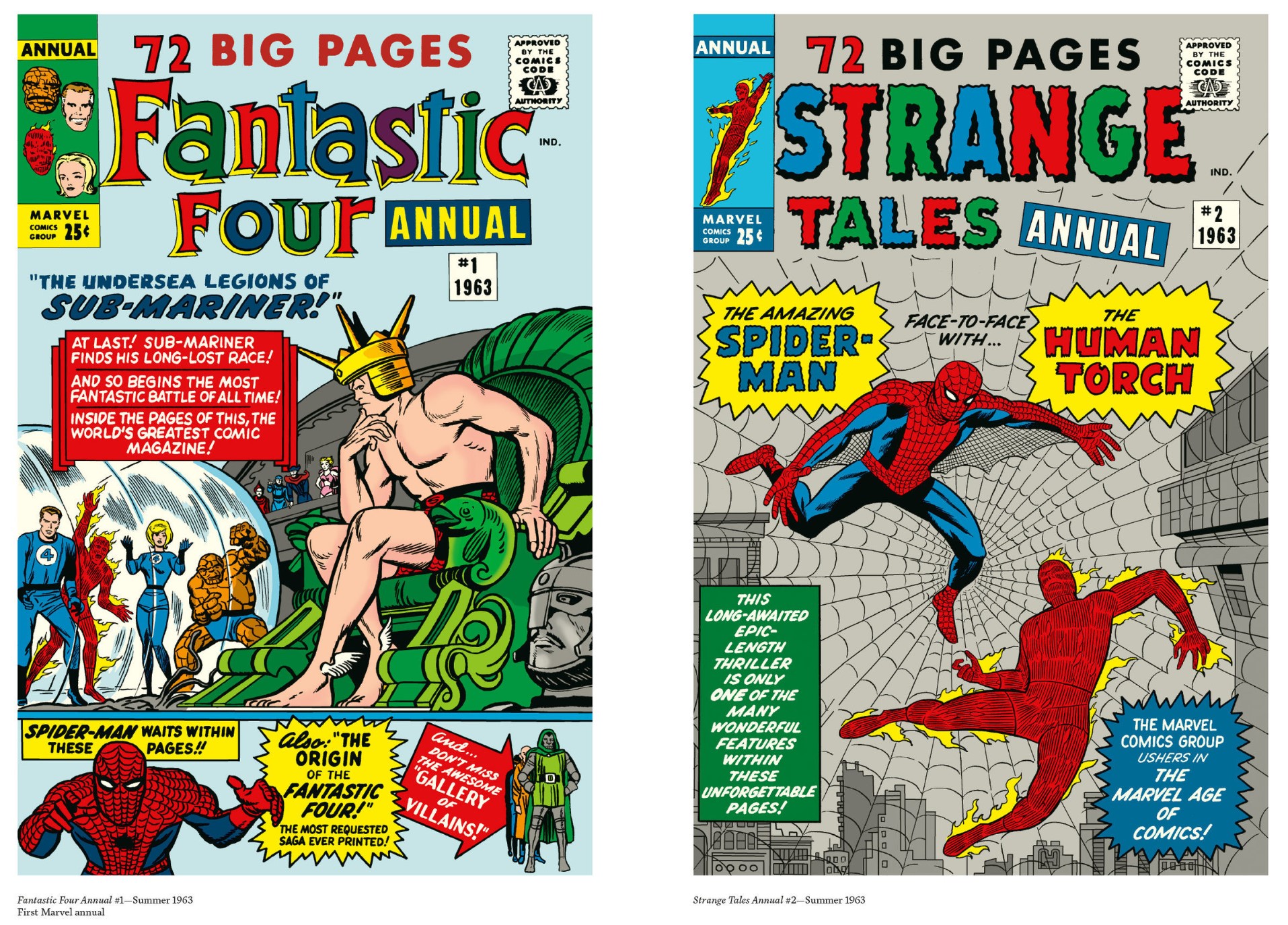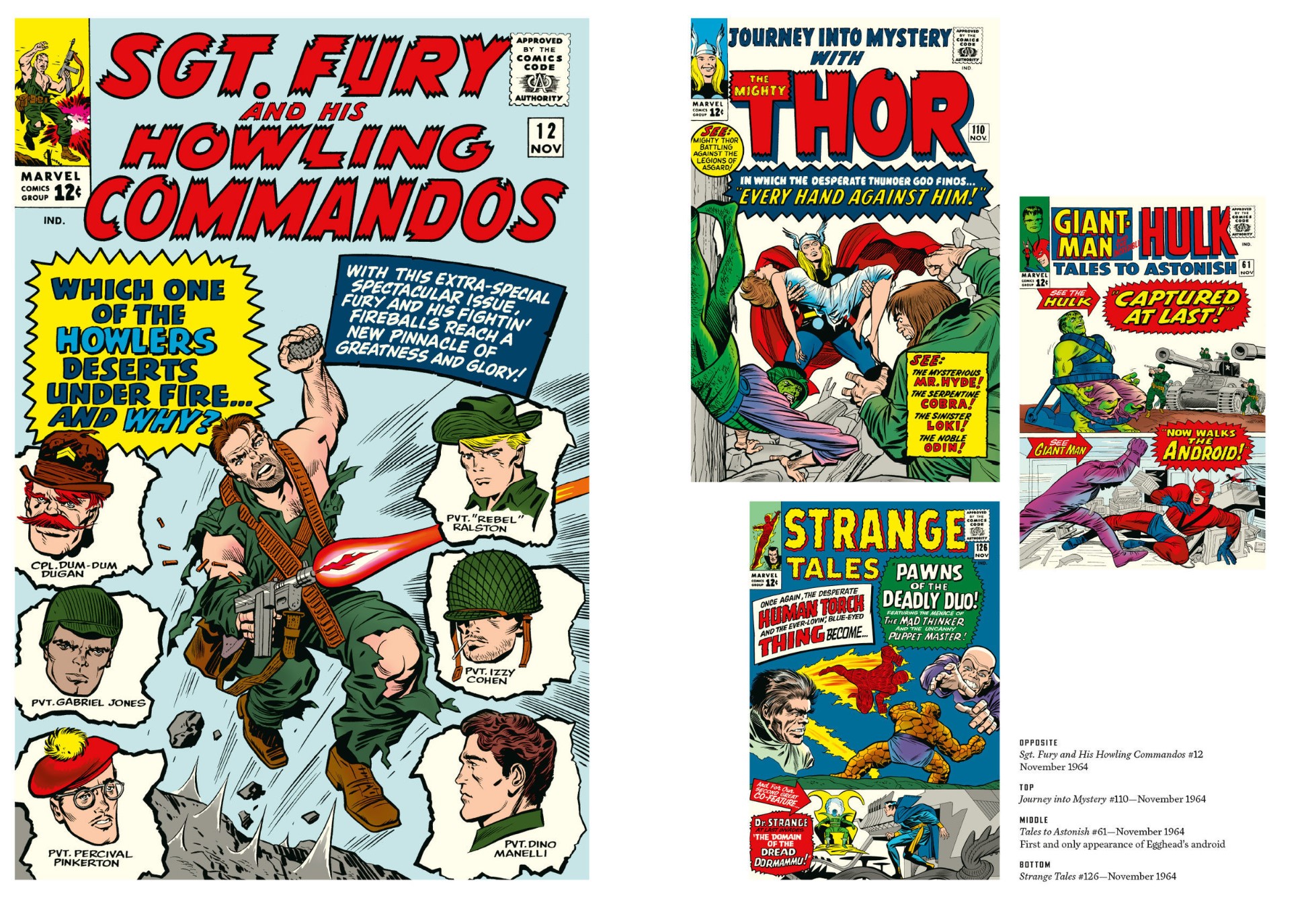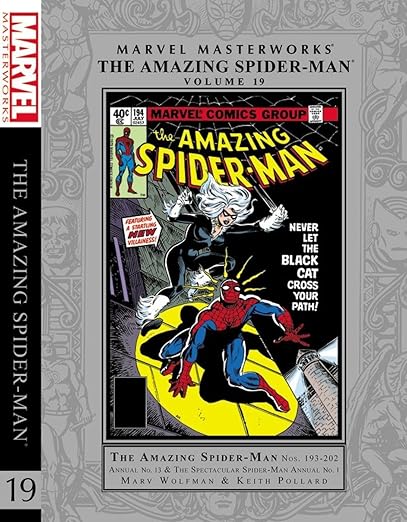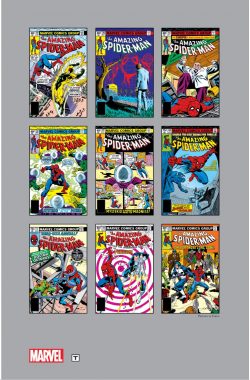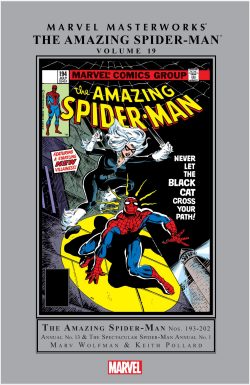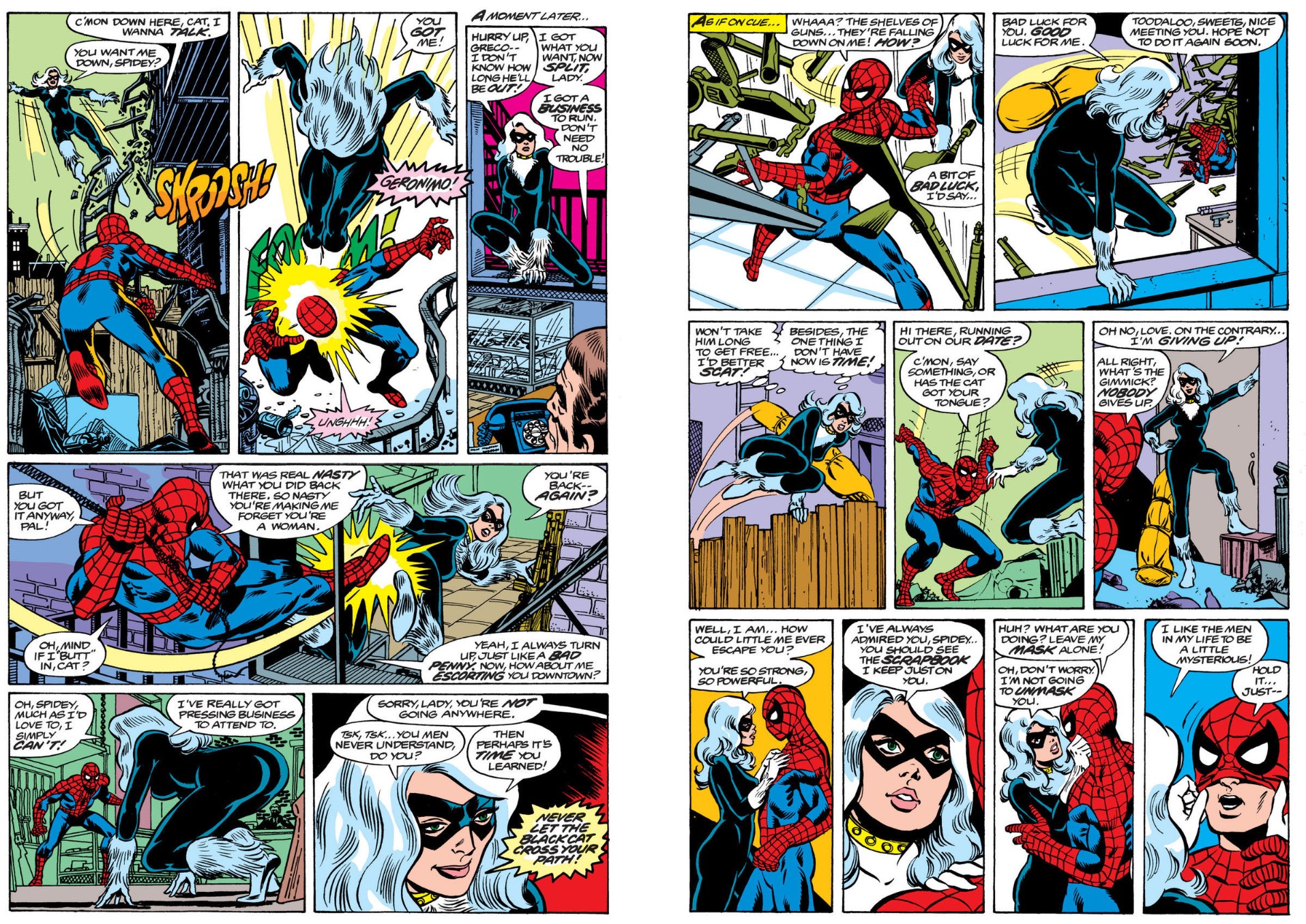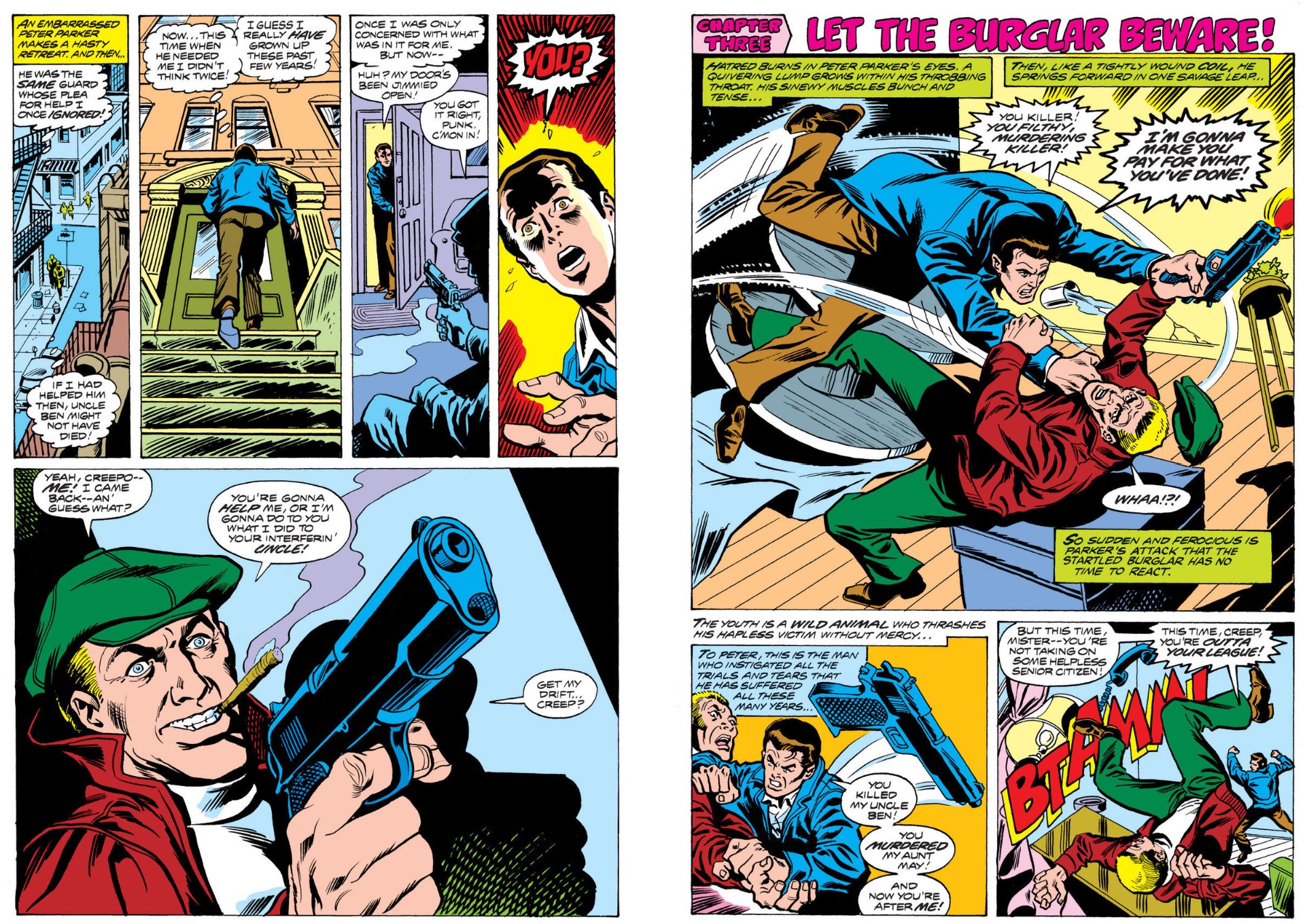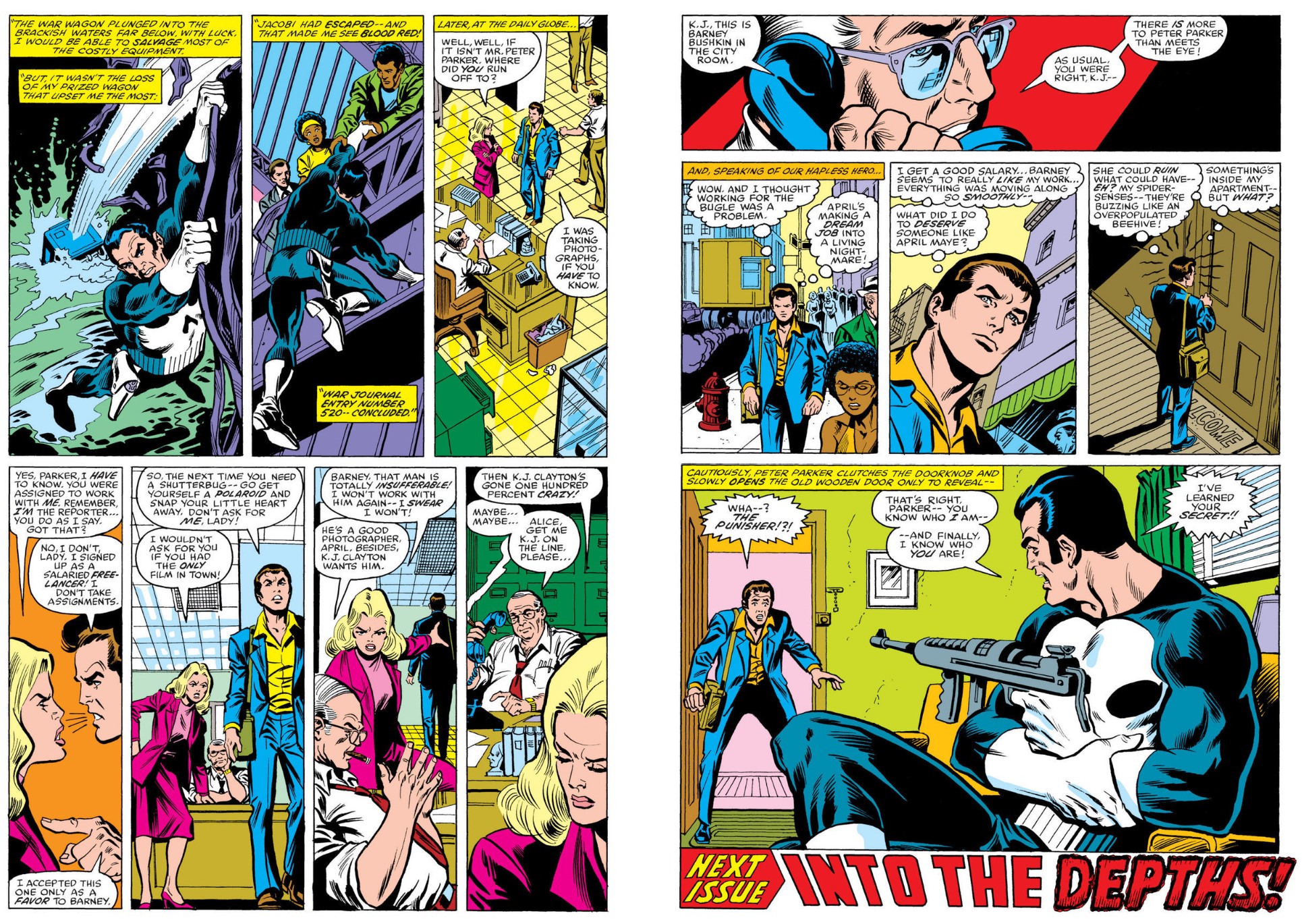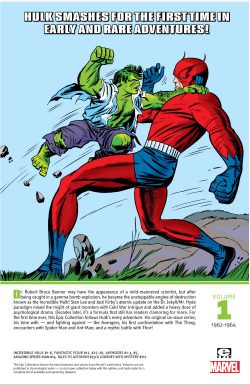
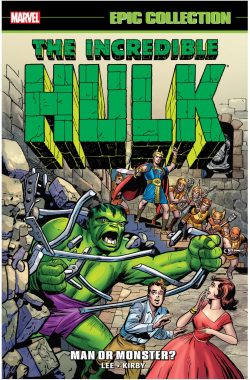
By Stan Lee, Jack Kirby, Steve Ditko, Paul Reinman, Dick Ayers, George Roussos, Chic Stone & various (MARVEL)
ISBN: 978-0-7851-9600-6 (TPB/Digital edition)
This book includes Discriminatory Content produced in less enlightened times.
Win’s Christmas Gift Recommendation: Timeless Monster Madness Masterpieces… 10/10
We all still like superheroes right? Here’s a bunch of yarns thou shouldst not miss…
Chronologically collecting the Jade Juggernaut’s earliest appearances, this titanic tome (available as a hefty paperback and relatively weightless digital edition) gathers Incredible Hulk #1-6; Fantastic Four #2 & 25-26; Avengers #1-3 & 5, Amazing Spider-Man #14; Tales to Astonish #59 and an unforgettable clash with Thor from Journey into Mystery #112: cumulatively spanning early 1962 to the end of 1964.
The Incredible Hulk was new-born Marvel’s second new superhero title, despite Henry Pym technically debuting earlier in a one-off yarn from Tales to Astonish #27 (January 1962). However, Hank didn’t become a costumed hero until the autumn, by which time Ol’ Greenskin was not-so-firmly established.
The Hulk smashed right into his own bi-monthly comic and, after some classic romps by Young Marvel’s finest creators, crashed right out again. After six issues the series was cancelled and Lee retrenched, making the Gruff Green Giant a perennial guest-star in other titles until such time as they could restart the drama in their new “Split-Book” format in TtA where Ant/Giant-Man was rapidly proving to be a character who had outlived his time.
Cover-dated May 1962, Incredible Hulk #1 finds puny atomic scientist Bruce Banner sequestered on a secret military base in the desert, perpetually bullied by bombastic boss General “Thunderbolt” Ross, even as the clock counts down to the World’s first Gamma Bomb test.
Besotted with Ross’s daughter Betty, Banner endures the General’s constant jibes as the timer ticks on and tension increases, but at the final moment the boffin sees a teenager lollygagging at Ground Zero. As he frantically rushes to the site to drag the boy away, unknown to all, the assistant he’s entrusted to delay the countdown has an agenda of his own…
Rick Jones is a wayward but good-hearted kid. After initial resistance he lets himself be pushed into a safety trench, but just as Banner prepares to join him The Bomb detonates…
Somehow surviving the blast, Banner and the boy are secured by soldiers, but that evening as the sun sets the scientist undergoes a monstrous transformation. He grows larger; his skin turns a stony grey…
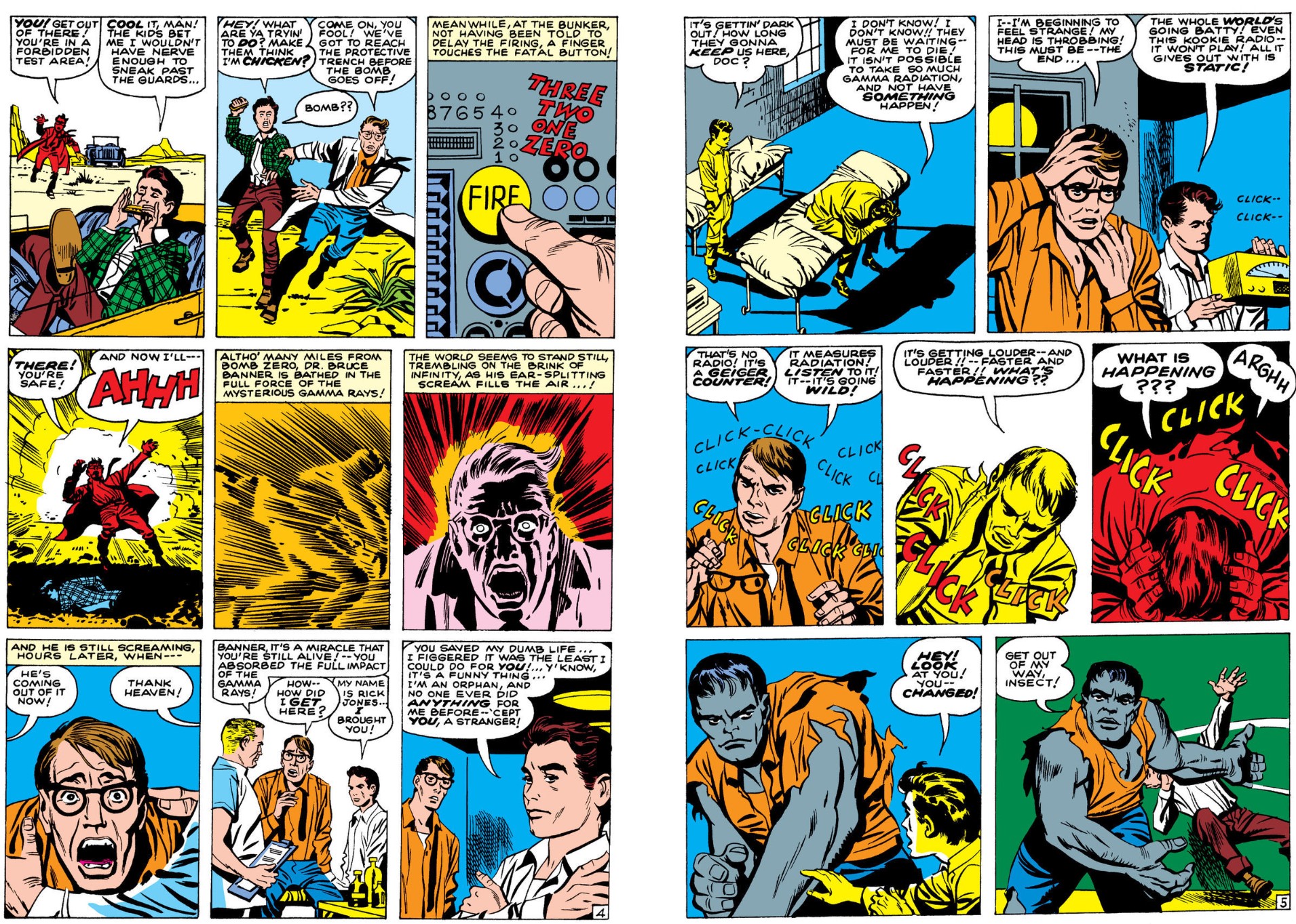
In six simple pages that’s how it all starts, and no matter what any number of TV or movie reworkings or comicbook retcons and psycho-babble re-evaluations would have you believe that’s still the best and most primal take on the origin. A good man, an unobtainable girl, a foolish kid, an unknown enemy and the horrible power of destructive science unchecked…
Written by Stan Lee, drawn by Jack Kirby with inking by Paul Reinman, ‘The Coming of the Hulk’ barrels along as the man-monster & Jones are kidnapped by Banner’s Soviet counterpart The Gargoyle for a rousing round of espionage and Commie-busting. He soon sees the (green) light, though…
In the second issue the plot concerns invading aliens, and the Banner/Jones relationship settles into a traumatic nightly ordeal where the good doctor transforms and is locked into an escape-proof cell whilst the boy stands watch helplessly. Neither ever considers telling the government of their predicament…
‘The Terror of the Toad Men’ is formulaic but viscerally, visually captivating as Steve Ditko inks Kirby; imparting a genuinely eerie sense of unease to the artwork. Incidentally, this is the story where the Hulk inexplicably changed to his more accustomed Green persona…
Although back-written years later as a continuing mutation, the plain truth is that grey tones caused all manner of problems for production colourists so it was arbitrarily changed to the simple and more traditional colour of monsters.
The third issue presented a departure in format as chaptered epics gave way to complete short stories. Dick Ayers inked Kirby in the transitional ‘Banished to Outer Space’ which radically altered the relationship of Jones and the rage-beast, with the story thus far reprised in 3-page vignette ‘The Origin of the Hulk’. Marvel mainstay of villainy the Circus of Crime debuts at the end in ‘The Ringmaster’ whilst in #4 The Hulk goes on an urban rampage for first tale ‘The Monster and the Machine’ prior to aliens and Commies combining in second escapade ‘The Gladiator from Outer Space!’
The Incredible Hulk #5 is a joyous classic of Kirby action, introducing immortal despot Tyrannus and his underworld empire in ‘The Beauty and the Beast!’, after which those pesky Commies came in for another pasting when the Jolly Green freedom-fighter crushes the invasion of Lhasa in ‘The Hordes of General Fang!’
Lee grasped early on the commercial impact of cross-pollination and – presumably aware of disappointing sales – inserted the Green Gargantuan into his top selling title next. Fantastic Four #12 (March 1963) featured an early crossover as the team were asked to help the US army capture ‘The Incredible Hulk’: a tale from Lee, Kirby & Ayers packed with intrigue, action and bitter irony. It begins with a series of spectacularly destructive sabotage incidents putting the heroes on the trail of a monster when they should have been looking at spies… Despite the sheer verve and bravura of these simplistic classics – some of the greatest, most rewarding comics nonsense ever produced – the Hulk series was not doing well. Kirby moved on to more appreciated arenas and Steve Ditko stepped up to handle art chores for #6: another full-length epic and an extremely engaging one.
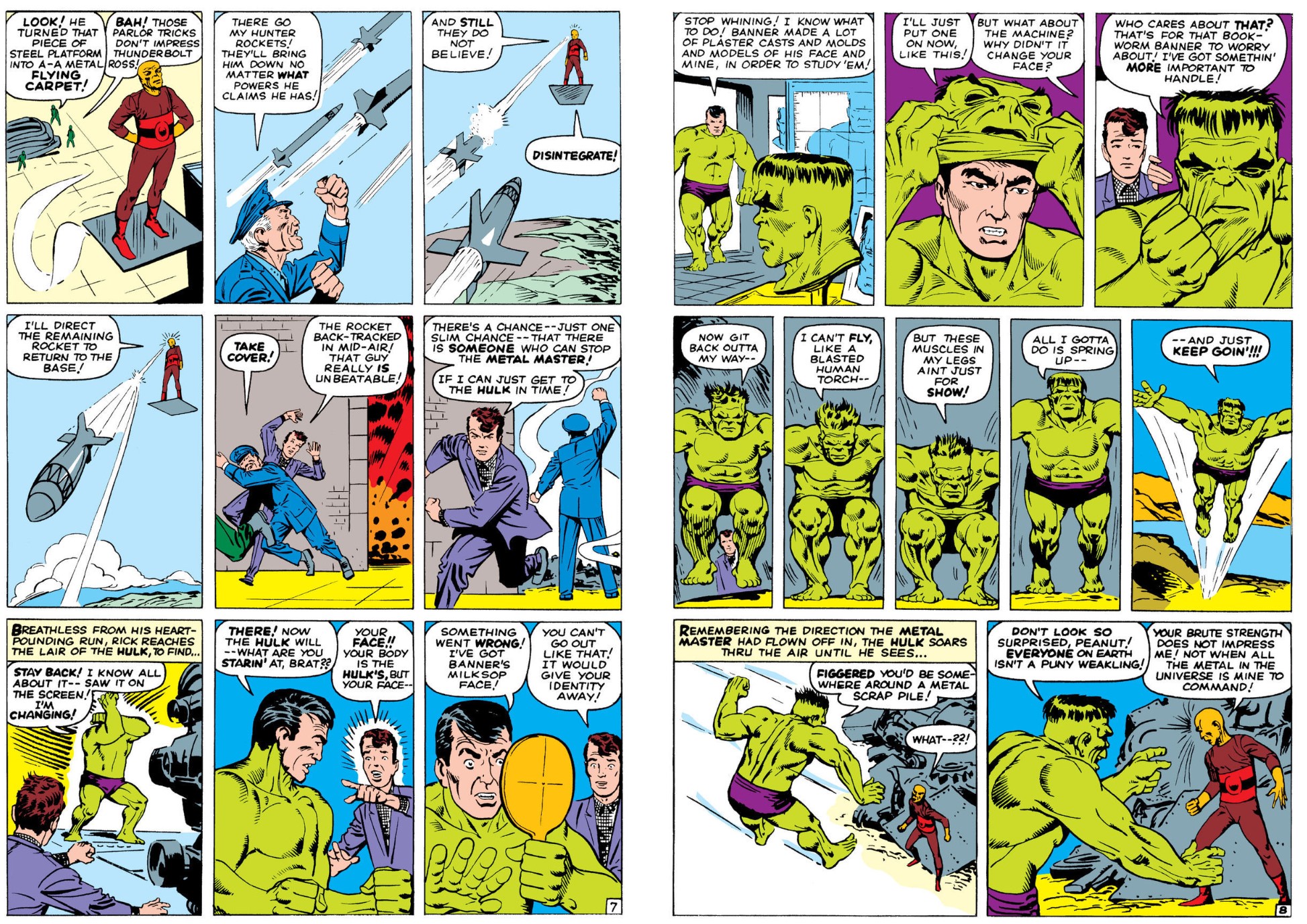
‘The Incredible Hulk Vs the Metal Master’ has astounding action, slyly subtle sub-plots and a thinking man’s resolution, but nonetheless the title died with the issue, also dated March. Another comic debuted that month and offered a lifeline to the floundering Emerald Outcast. ‘The Coming of the Avengers’ offers one of the cannier origin tales in comics. Instead of starting at a zero point and acting as if the reader knew nothing, creators Lee, Kirby & Ayers assumed interested parties had at least a passing familiarity with Marvel’s other titles, and wasted little time or energy on introductions in the premiere issue.
In Asgard Loki, god of evil, is imprisoned on a dank islet but still craves vengeance on his step-brother Thor. Observing Earth, the villain sees the monstrous Hulk and engineers a situation wherein the man-brute goes on a rampage, hoping to trick the Thunder God into battling the bludgeoning brute. When sidekick Rick Jones radios the Fantastic Four for assistance, Loki diverts the transmission so they cannot hear it and expects his mischief to quickly blossom. However, other heroes pick up the SOS – namely Iron Man, Ant-Man & the Wasp – and as the costumed champions converge on the desert in search of the Hulk, they realize something’s amiss…
This terse and compelling yarn is Lee & Kirby at their absolute best, and one of the greatest stories of the Silver Age, here promptly followed by ‘The Space Phantom’ (Lee, Kirby & Reinman): another unforgettable epic, in which an alien shape-stealer almost destroys the group from within. The tale ends with the volatile Hulk quitting the team only to return in #3 as a villain in partnership with ‘Sub-Mariner!’: a globetrotting romp delivering high energy thrills and one of the best battle scenes in comics history.
Three months later, Fantastic Four #25 featured a cataclysmic clash that had young heads spinning in 1964… and pretty much ever since. Inked by George Roussos, ‘The Hulk Vs The Thing’ and concluding saga ‘The Avengers Take Over!’ in FF #26 offered a fast-paced, all-out Battle Royale as the disgruntled man-monster comes to New York in search of sidekick Rick, with only an injury-wracked FF in the way of his destructive rampage.
A definitive moment in the character development of The Thing, the action accelerates and amplifies when a rather stiff-necked, officious Avengers team horns in claiming jurisdictional rights on “Bob” Banner and his Jaded Alter Ego. This tale is plagued with pesky continuity errors which would haunt Lee for decades, but notwithstanding the bloopers, this is one of Marvel’s key moments and still a vivid, vital read.
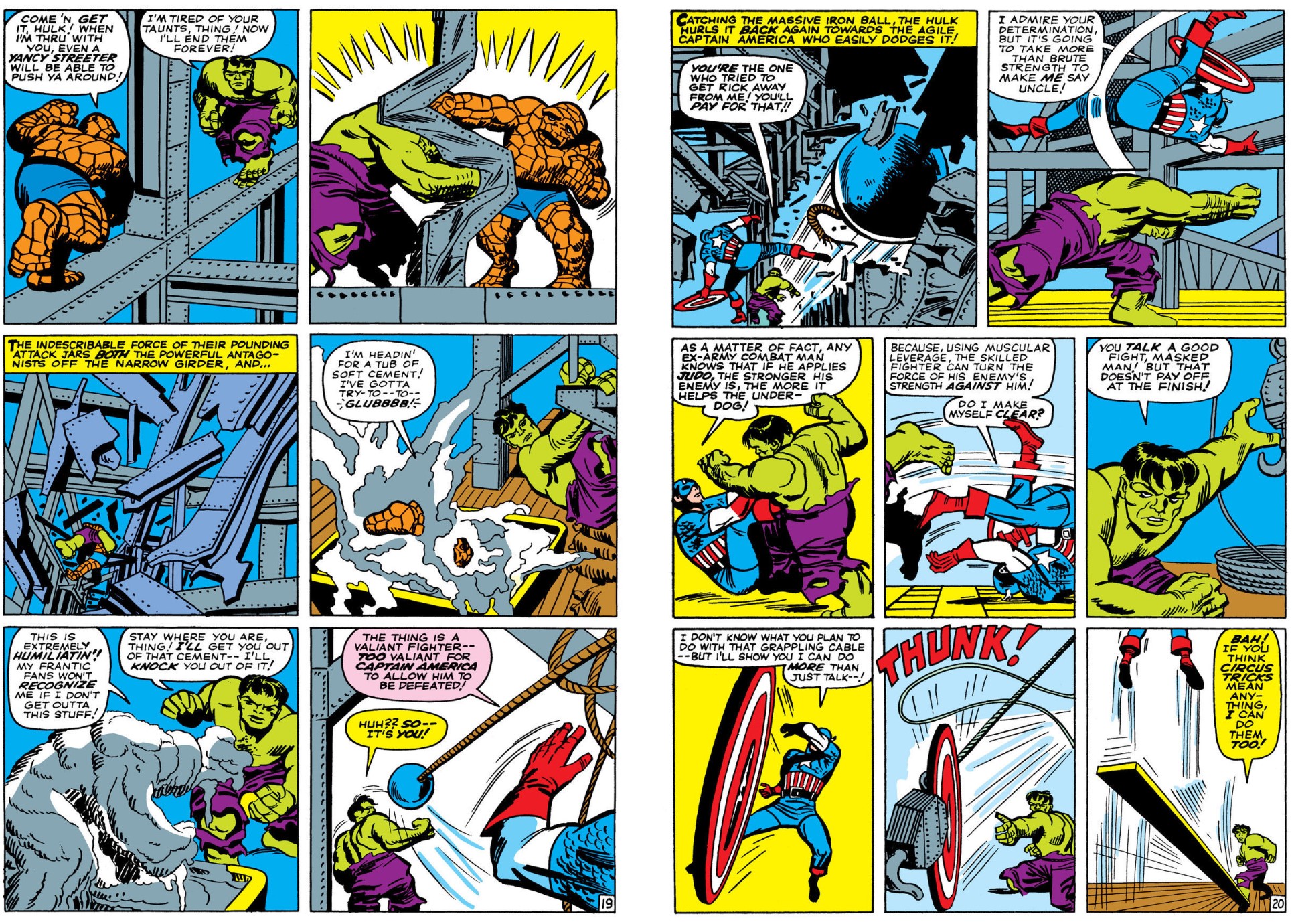
Over in Avengers #5, ‘The Invasion of the Lava Men!’ (Lee, Kirby & Reinman) resulted in another incredible romp as Earth’s Mightiest battled superheated, superhuman subterraneans and a lethally radioactive mutating mountain with the unwilling assistance of the Hulk. It would be his last appearance there for many months…
However, the next cameo came in Amazing Spider-Man #14 (July 1964): an absolute milestone as a hidden criminal mastermind debuted; manipulating a Hollywood studio into making a movie about the wall-crawler. Even with guest-star opponents such as the Enforcers the Incredible Hulk steals all the limelight in ‘The Grotesque Adventure of the Green Goblin’ (Lee & Ditko) which is only otherwise notable for introducing Spider-Man’s most perfidious and flamboyant enemy (sarcasm alert!).
The second stage of the man-brute’s career was about to take off and Tales to Astonish #59 (September) offered a pulse-pounding prologue as ‘Enter: The Hulk!’ (Lee, Ayers & Reinman) sees the Avengers inadvertently provoking Giant-Man to hunt down the Green Goliath. Although The Human Top devilishly engineered that blockbusting battle, Lee was the real mastermind, as with the next issue The Hulk debuted in his own series – and on the covers – whilst Giant-Man’s adventures shrank back to a dozen or so pages.
This wonderfully economical compendium of classic wonders closes with the lead story from Journey into Mystery #112 (January 1965). ‘The Mighty Thor Battles the Incredible Hulk!’ is a glorious gift to all those fans who can’t help but ask “Who’s stronger?”
Arguably Kirby & Chic Stone’s finest artistic moment together, it details the private duel between these two super-humans that occurred during the free-for-all between Earth’s Mightiest, Sub-Mariner and Ol’ Greenskin back in Avengers #3. The sheer raw power of that tale is a perfect exemplar of what makes the Hulk work (and one that inspired that fight in the Thor: Ragnarok movie) and would be an ideal place to close proceedings.
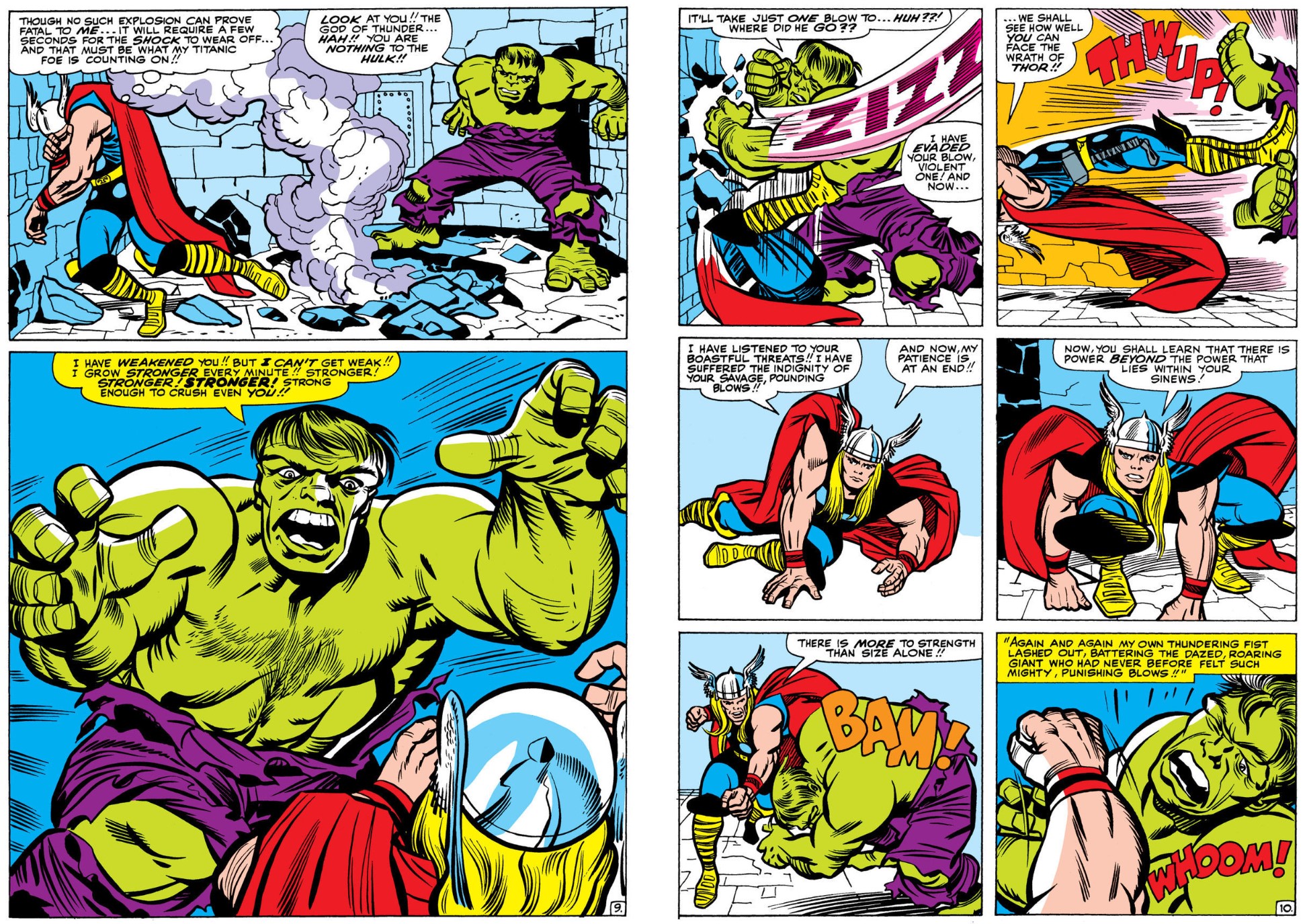
Happily, however, fans and art lovers can enjoy further treats in the form of assorted House Ads; original artwork by Kirby & Ditko; a gallery of classic Kirby covers modified by painter Dean White (originally seen on assorted Marvel Masterworks editions) plus reproduced Essentials collection and Omnibus covers by Bruce Timm and Alex Ross…
Hulk Smash! He always was and with material like this he always will be.
© 1962, 1963, 1964, 1965, 2016 Marvel Characters, Inc. All rights reserved.
Today in 1923 the magnificently quirky Mike Sekowsky was born. We all know about his Justice League, Adam Strange, Metal Men and Inhumans stuff but have you seen Diana Prince, Wonder Woman volume 1?

